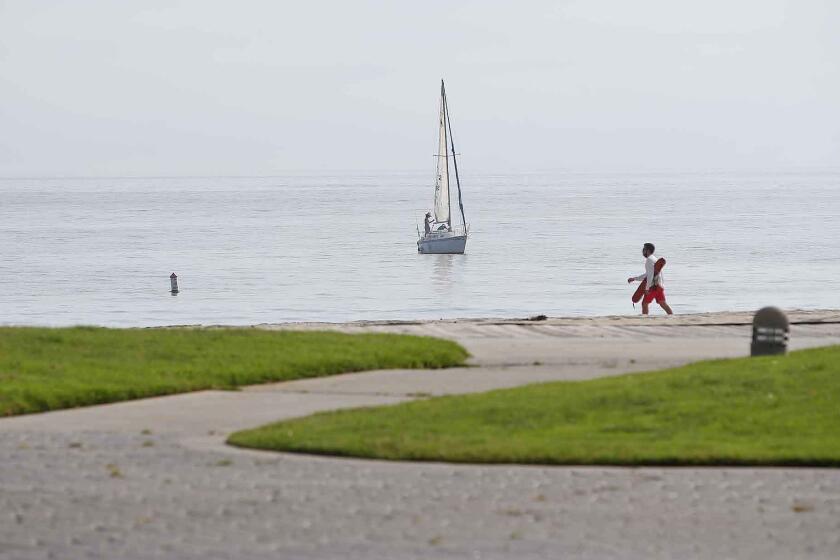LCAD animation student makes ear saver clips for Mission Hospital
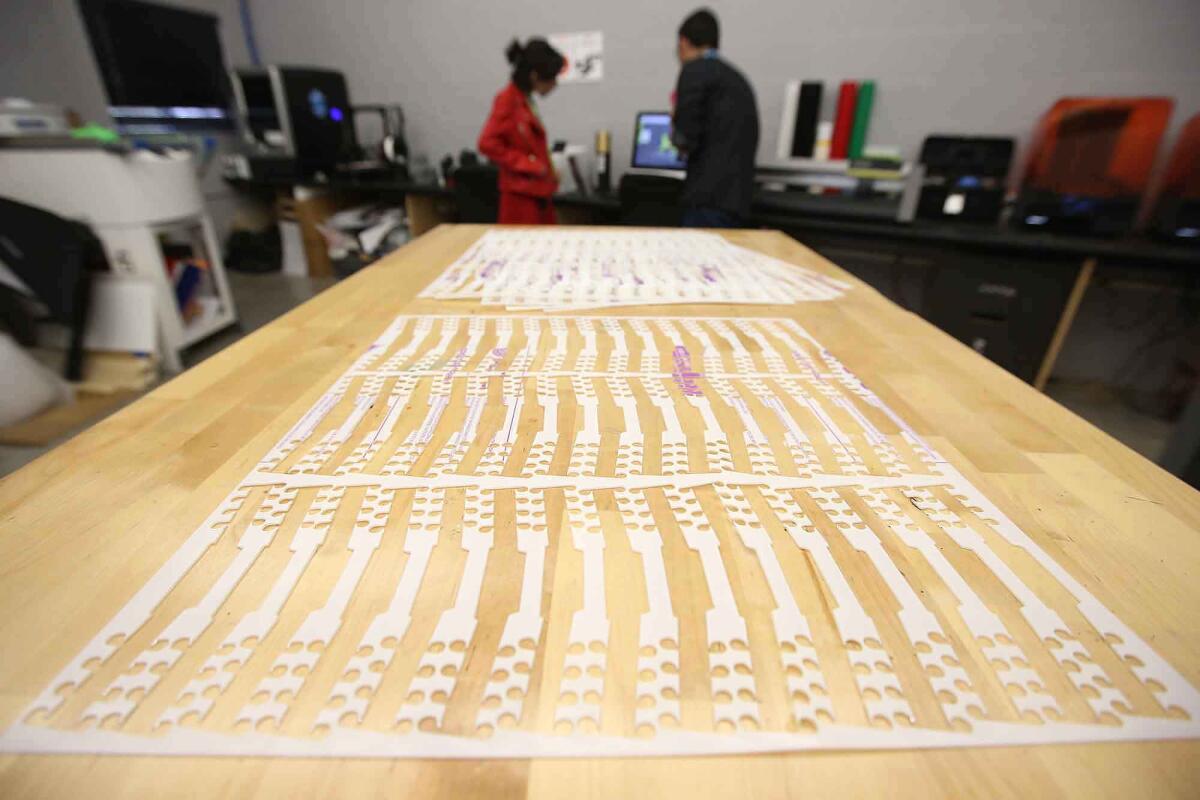
Elisa Gimenez wanted to help.
At first, she had thought to donate blood to the Red Cross, but realized that she wouldn’t be able to because she was underweight. She had been in the house for a week and a half and felt that the “world was going to pieces.”
“I was just back to, ‘How can I help? What can I do?’ I don’t have a lot of skills that would be useful for this,” said Gimenez, who is studying animation at the Laguna College of Art and Design but lives in Mission Viejo.
She said she had been looking on social media, where she said she saw posts of doctors and nurses with bruises on their faces from the equipment that they were using. She said heard about ear saver clips, which relieve pressure on those wearing masks, and that she didn’t even know that it was an issue.
“From reading that, I thought, ‘Man, I wish I could help with that.’ Then, I dug some more and I remembered [Laguna College of Art and Design] has a fabrication lab with a 3D printer,” Gimenez said. “I started calling hospitals [and asking], ‘Is this a real thing, an issue that you have?’”
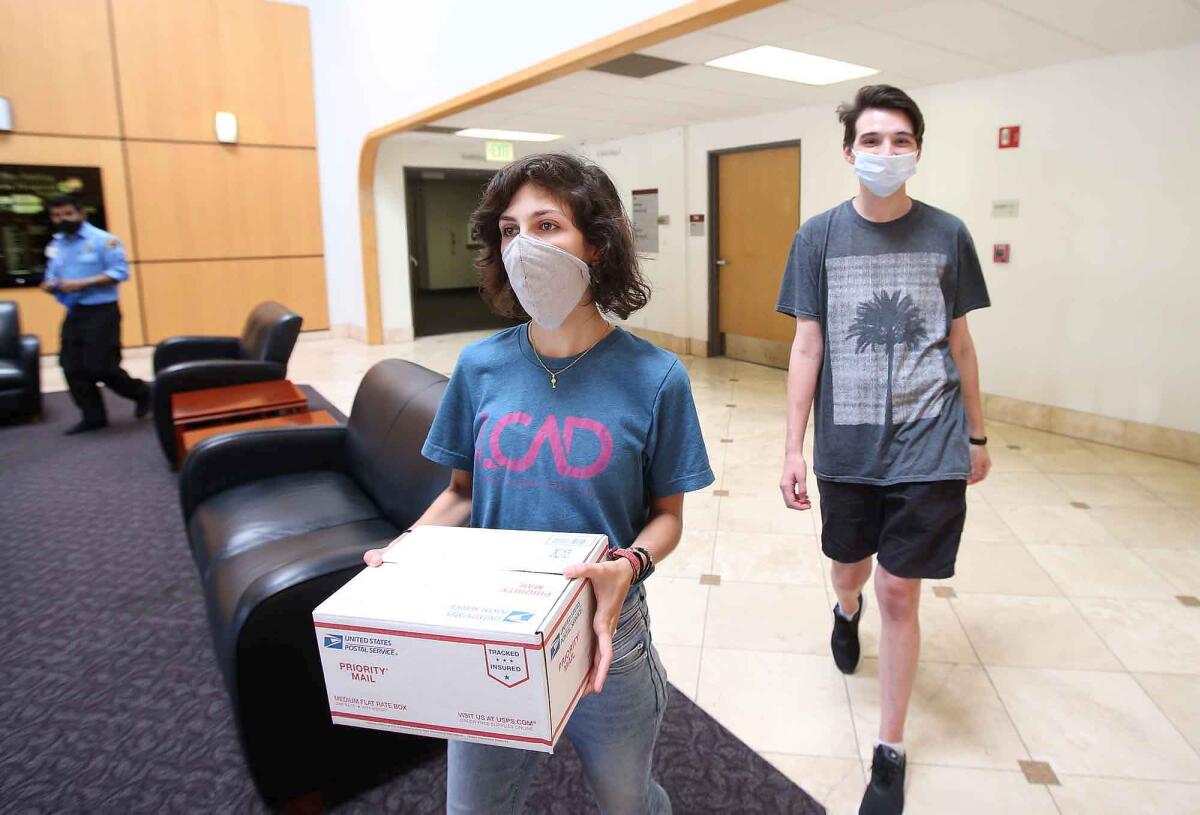
Gimenez called the Mission Hospital Foundation to ask for an estimate. The foundation requested about 1,000 ear saver clips.
That’s when Gimenez contacted Hugo Hernandez, the director of the LCAD Fabrication Lab, in early April with research, prototypes and asked if it would be possible. Hernandez said the lab had seven 3D printers, but that only one of them could print the ear clips because of its size.
“Initially, I felt a little embarrassed to say we only had one 3D printer capable of printing those,” Hernandez said. “But, I was totally on board. I really wanted to help her with that project. I guess the first thing that came to mind was all the difficulties to move forward with this project while still maintaining social distancing and not going onto campus.”
Hernandez said that most employees of the art school were working from home, and that since he runs the lab, he brought the printer home where he printed about 35 ear savers a day with the printer running at capacity.
With students at-home and some professors adjusting assignments to not include 3D models, Hernandez said the fabrication lab had an abundance of material that wasn’t getting used. The art school said it would donate the materials for printing.
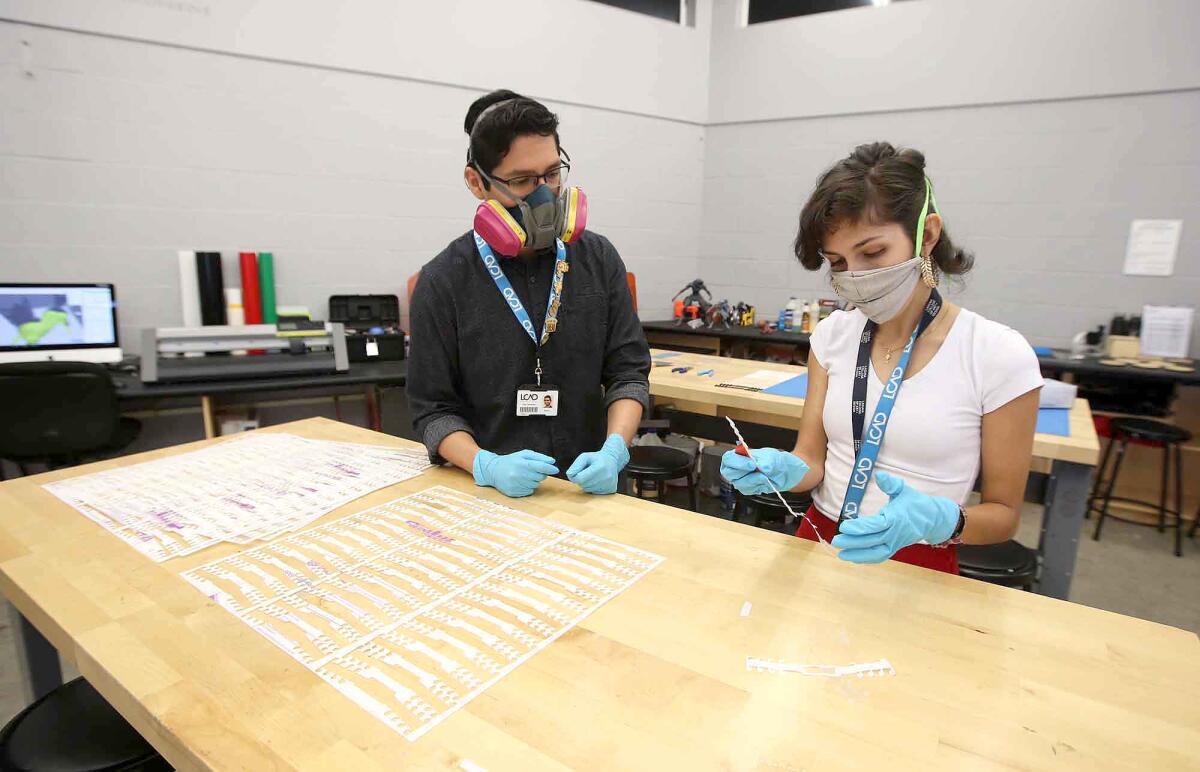
Since then, the operation has transitioned to laser-cutting ear saver clips from PEP-G, which Hernandez said is more hygienic because the clips are cut directly from a sheet of plastic as opposed to 3D-printed clips.
“These 3D-printed pieces have nooks and crannies between the layers of plastic, and I can make a lot more,” Hernandez said. “[Friday], instead of 3D-printing, I focused my efforts on laser cutting and I made 265.”
“With the whole coronavirus thing, like, I feel as every average citizen, you don’t really plan on preparing on needing this stockpile of medical equipment and just emergency supplies,” Hernandez said. “Now that it hits and knowing there isn’t a reserve somewhere out there for [medical professionals] or the stockpiles that we do have aren’t up to par with what we need, it sucks to know that medical professionals out there that don’t have the equipment they need.”
“Anything [LCAD] can do to help with that, we’re all on board,” he said.
“I am in awe of Elisa’s creativity and determination to contribute to the well-being of our county’s clinical teams. I am so proud of her initiative and the support she has received from Hugo Hernandez, who leads our LCAD Fabrication Lab,” Jonathan Burke, president of LCAD, said in a statement. “It just reminds me of how truly exceptional the LCAD family is and how fortunate I am to be part of it.”
Laguna Beach is reopening its beaches and some trailheads for the morning hours on Monday, following direction given to city staff at the city’s special City Council meeting Tuesday.
Gimenez said that they’ll be posting up a downloadable template and instructions for the laser cut design online soon, so that those with laser cutters can access and work on projects independently.
The ear saver clips will be distributed to nursing units across both the Mission Viejo and Laguna Beach campuses through the Mission Hospital Foundation.
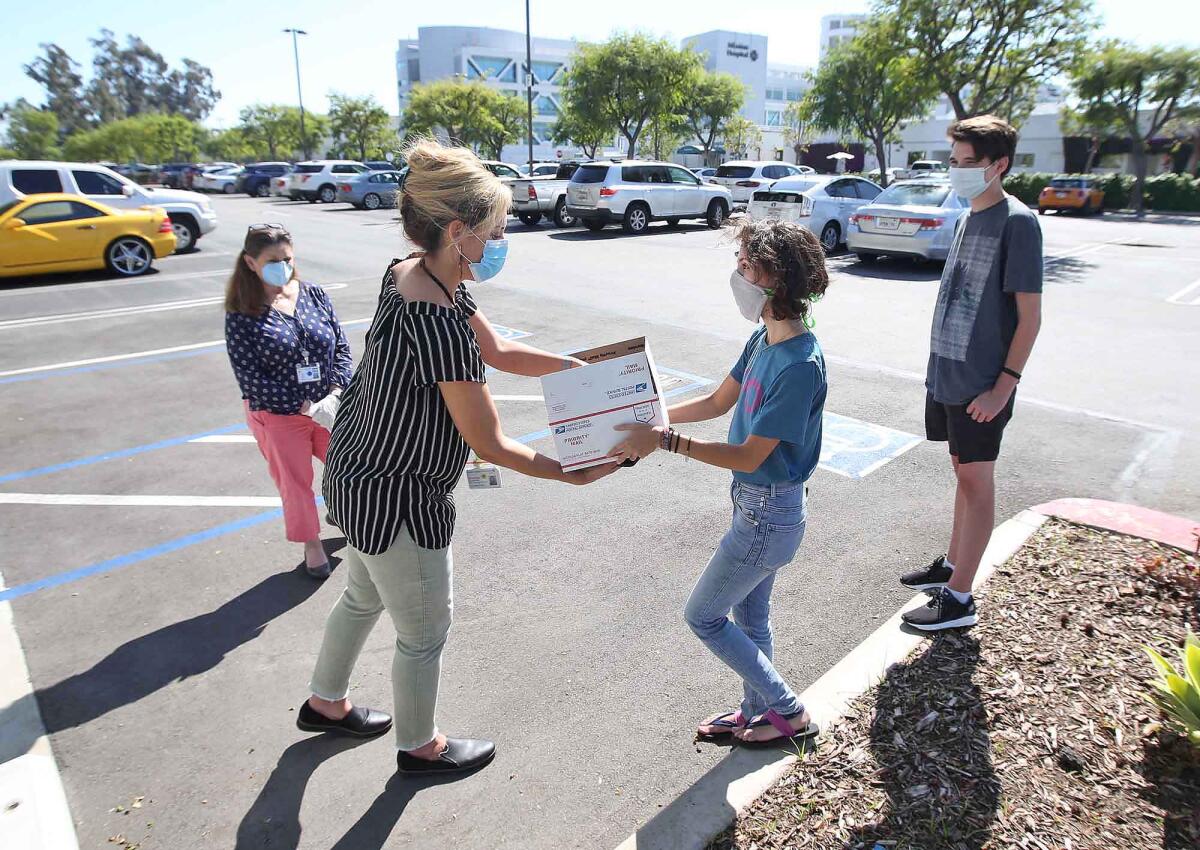
“So many of our nurses work 12-hour shifts and that’s a long time to wear a mask, especially since many people find the elastic straps to be uncomfortable,” said Jennifer Cord, chief nursing officer at Mission Hospital.
“These ear savers are wonderful. It is so heartwarming to see all the ways that our community is coming forward to support us during these very challenging times,” Cord said. “We are blessed to serve a very generous community.”
Gimenez said the current goal is to meet the 1,000 requested, but that the hope is to be able to expand and donate to other hospitals in need.
For Gimenez, she said that the COVID-19 pandemic shows “the kind of person it takes to go into a medical profession.”
“They’re risking their lives. They’re going out to the hospitals. They’re quarantining themselves. They’re sleeping in their cars just so they can stay closer to work. They’re doing all these sacrifices to help as many people as possible in this really weird time in history,” Gimenez said.
“I just want to find ways to help,” she added. “If this is what they’re doing and they’re going to keep doing it, I want to make sure that they’re at least comfortable or as comfortable as they can be while they’re doing it.”
All the latest on Orange County from Orange County.
Get our free TimesOC newsletter.
You may occasionally receive promotional content from the Daily Pilot.
